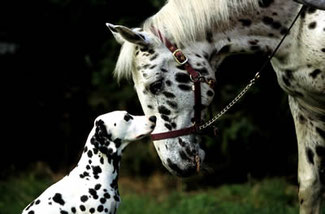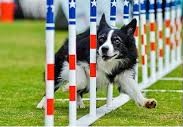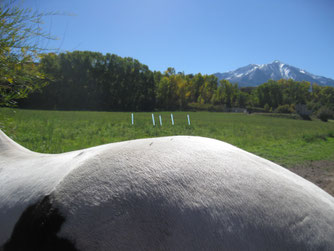
The wheel of progress in medicine turns slower than molasses in January. Speaking from experience, molasses runs really slowly in January. The obstacles to change are myriad, from the FDA’s requirements for double-blind, placebo-controlled studies (this is a topic for another day), to overcoming practitioners’ ingrained patterns to do exactly what they’ve always done.
Fortunately for the animals of the world, the wheel of veterinary medicine moves marginally faster than that of human medicine. Our pace of progress tends to average the break-neck speed of… molasses in March.
The first time I saw acupuncture on a horse was in 1990. The vet nearly had to do it in disguise, under the cover of darkness, to avoid being ostracized from the veterinary community. As a veterinarian today, I can openly admit that I specialize in physical medicine and “alternative” therapies.
Synergistic: like peanut butter and jelly
Honestly, I reject the term “alternative.” In my practice I focus on chiropractic, acupuncture, rehabilitation, laser therapy, and nutrition for horses, dogs, and cats.
These physical medicine modalities are no more an alternative to conventional medicine than jelly is an alternative to peanut butter. Simply, they are better together. They are synergistic: the total effect is more powerful than the sum of the individual parts. These “integrative” modalities are crucial for achieving optimum health.
The integrative approach

Let’s look at an example of an integrative approach: A competitive agility dog, Jackson, stops performing in the pole bending and just seems “off,” so the owner takes him to the veterinarian.
The vet does a physical exam, the heart and lungs are normal, and there is no obvious pain. Bloodwork is normal. She prescribes anti-inflammatories, a week of rest, and a re-check. Adequate? Perhaps. Optimum? Not really.
Looking for more answers, the owner takes Jackson to an integrative veterinarian. Building upon the diagnostics already done, this vet starts with a thorough myofascial palpation.
Interestingly, the quadriceps and hamstrings on Jackson’s right hind are not symmetrical. This can be an indicator of early cruciate disease. Accordingly, some effusion (swelling) of the stifle joint (analogous to the human knee) is identified. There is also a strain pattern along the right gluteal muscles and into the back musculature next to the spine.
soft tissue work and electro-acupuncture
Soft tissue work is done to release the muscular tension. After mobilization of each vertebra, restricted thoracic mobility is identified. The corresponding ribs are tender which makes bending around the poles difficult. The affected vertebrae are chiropractically adjusted, so the spinal mobility is normalized, and the ribs are no longer tender.
Electro-acupuncture is used to stimulate symmetrical firing of the quadriceps and hamstrings which minimizes the risk of progressive cruciate disease. Laser therapy reduces stifle inflammation. Rehabilitation exercises are prescribed.
Nutritional and botanical recommendations are made to reduce inflammation and provide optimum musculoskeletal support. The owner is then taught to palpate for muscle tenderness and is given a framework for how to proceed if Jackson’s soreness returns.
This, then, is an integrative approach. It’s synergistic. It’s like peanut butter and jelly.
adequate vs optimum

Mainstream western medicine has so much to offer sick animals. They have diagnostics down. There is no substitute for a bloodwork panel to evaluate an animal’s health, or for diagnostic imaging to view organs and the musculoskeletal system.
Conventional medicine also offers many important treatments. Appropriate antibiotics and emergency surgeries save lives.
There are, however, some areas where conventional medicine, in my opinion, falls short. What botanicals do they offer to support the immune system during the stress of infection or surgery? Often none. Beyond rest and anti-inflammatories, what therapies do they offer the aging dog who is showing signs of arthritis? Often none. What can they offer the horse who has become grumpy about going to the right in the jumper arena but shows no obvious signs of lameness? Often nothing.
Now, 28 years after I first saw horse acupuncture, I don’t have to disguise myself to be an integrative therapies specialist. Physical medicine is not yet entirely mainstream, but these therapies are gaining momentum.
The wheel is turning, albeit like molasses in March.

Write a comment